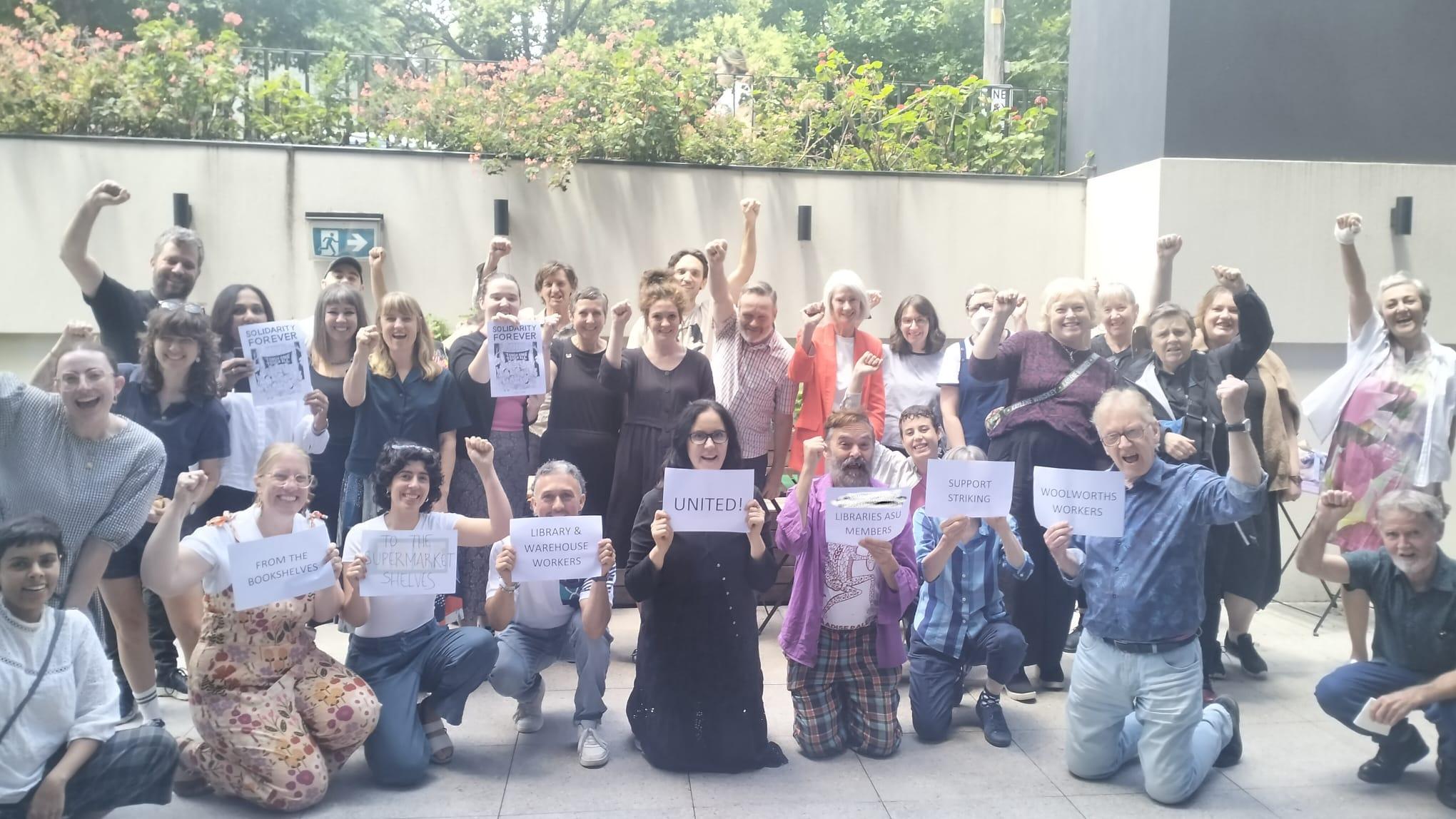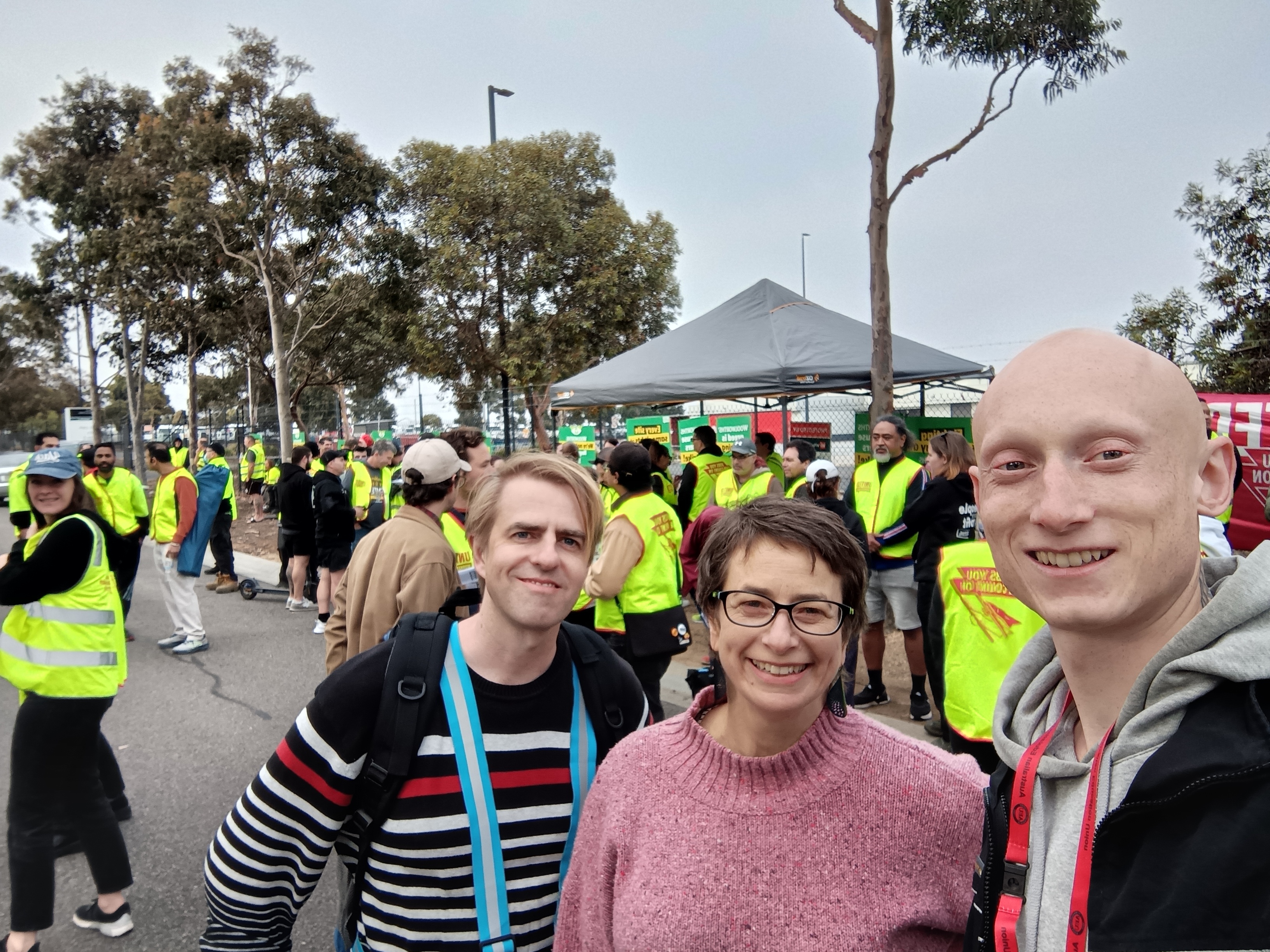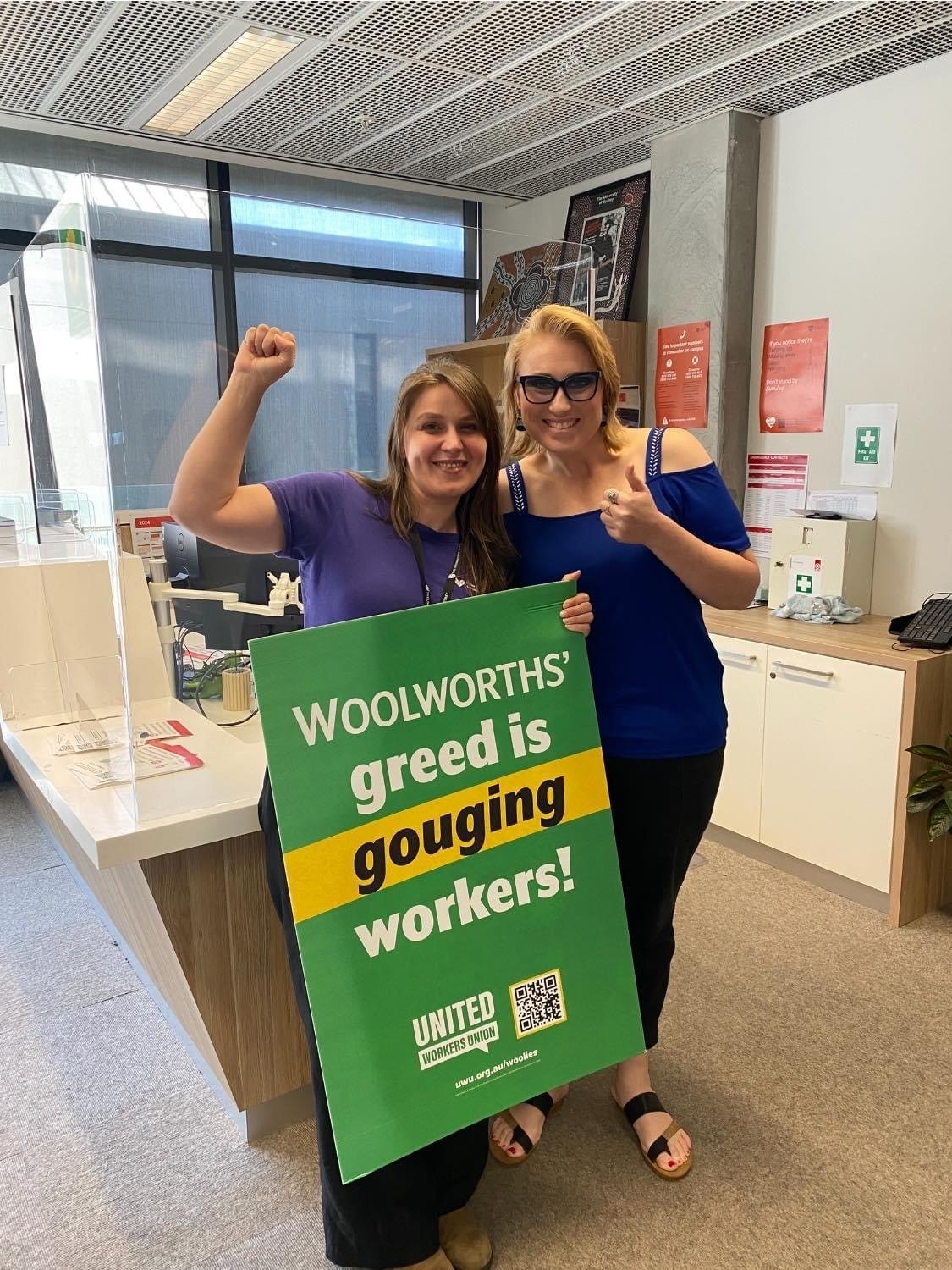How solidarity with Woolworths strikers helped build union strength
The Woolworths strikers gave a huge gift to the whole working class. By standing up for themselves against one of the most hated companies in the country, they set an example for the rest of us—and sparked discussions about union issues in workplaces around the country.
With union membership and industrial action at historically low levels, it can be hard to push against the tide. But we can train ourselves as union activists to take every opportunity we can, small as they might be, to rebuild our unions. Red Flag spoke to four socialists about how organising solidarity activities with the distribution centre strikers added some spark to their workplace organising and discussions.
--------------------
Emma is a librarian in Melbourne. Her workplace is stratified, with workers rotating daily across five different sites. “This really limits the opportunities to build workplace solidarity and relationships, hold mass meetings or organise collective actions”, she says.
So when Emma heard that workers from all the libraries were coming together for a professional development day, she took the opportunity. The week before, she spoke with sympathetic workmates about the Woolies strike and suggested they take a solidarity photo together.
“Once I had some people on board, we posted the idea in our workplace union members’ chat, with examples of what other comrades were doing at their workplaces”, she says. Immediately, one worker took the initiative to print some signs containing slogans of support.
In one of the professional development sessions, Emma went table to table, inviting people to join the solidarity photo and telling them about the strike, the threats against the workers and Woolies’ Fair Work Commission application to stop the industrial action.
“Every single coworker of mine joined the photo—except for senior leadership and HR consultants, of course”, she says.
They chanted solidarity slogans and raised their fists.
“It was an incredibly powerful experience for all involved”, she says. Over the next few days, three workmates asked her for union membership forms.
“The following week was filled with conversations about the strike, and the treachery of Woolworths and the Fair Work Commission”, she says. “People debated what the Woolies workers had won and lost in the final agreement. This moved on to discussions about our own EA [enterprise agreement] and how important it will be to understand and debate clauses and loopholes during bargaining.”
Along with recruiting people to the union, the action and the associated conversations have contributed to a stronger culture of solidarity at her workplace. “It’s raised people’s knowledge of workers’ power and normalised the idea of taking industrial action”, she says. “And I think people have a stronger sense of the importance of strikes and not accepting crummy agreements.”
Emma’s workplace will start negotiations for a new contract next year, and will have the option to join a multi-enterprise bargaining campaign.
“These lessons about workers’ solidarity and the importance of industrial action are timely. And the new recruits are precious”, she says.

Zac is a high school teacher in Melbourne’s western suburbs. When the Woolworths strike started, he put out a call to active members of his Australian Education Union sub-branch and any coworkers who had previously shown interest in union or other activist events, inviting them to visit the picket with him the next morning.
“I wasn’t sure if anyone would respond”, he says. “But two colleagues got in touch and joined me the next day. It was uplifting to visit the picket together and see workers pushing back against declining wages and unsafe working conditions—problems very relevant to school staff.”
Being at the picket together allowed Zak and his workmates a rare opportunity to discuss politics and ways to address the issues at their school. They decided to raise strike funds for the picket and collected around $200.
“On top of this practical support for the strikers”, he explains, “it allowed us to talk to other colleagues about the power of strikes and pushing back against the cost-of-living pressures and working conditions affecting them all—a particularly important conversation because we go into bargaining with the state government for a new agreement next year”.
“We’ve generated a bit of buzz among staff; it was a great experience.”

Alma is a university administration worker in Sydney. “I mostly did what I normally do, which is talk to people”, she says of her reaction to hearing about the Woolies strike.
“I spoke to 30 or so people who work in my building—some of them I was talking to for the first time. I just fronted up to them and asked if they’d heard about what Woolies was doing”, she says. “Everyone had an excellent reply. And we had long conversations about the cost-of-living crisis, outrageous performance targets, work health and safety and generally hating bosses.”
“The picket was a fair drive away from where we worked and hard for full-time workers to get to”, she says. “But I brought back a placard from the picket and plonked it in the middle of the office. I also walked around with it. It struck up more great conversations.”
Alma regularly shared information in the work group-chats—articles and updates on the strike, as well as a supportive petition and link to the strike fundraiser. “People started to follow the strike themselves through other sources”, she says. “It was clear how many people supported the strike and appreciated the importance of what these workers were doing.”
“I raised the strike in my NTEU [National Tertiary Education Union] branch committee and we passed a motion of solidarity”, she says. “I also got people to take photos with the strike placard, encouraging them to share them on social media and start conversations with their friends. A bunch of them shared articles too.”
April is a train driver. “I have hundreds of colleagues, so I try to spend time in breaks getting to know more of them. Part of that is asking them what they think about different political issues and sharing my own opinions, too”, she says.
She recently spent a week talking to colleagues about a potential strike after the NSW government opposed the union’s wage claim, among other things. The strike did not eventuate, but the Woolies strike began on the same day. “I saw the Woolies strike as a perfect example of what we could do too”, she recounts. “So I wanted to build solidarity with the striking Woolies workers and start some more political conversations, even if I could only make a small contribution.”
She approached about 30 people and got more than twenty to take solidarity photos to send to the Woolworths strikers. Around half the people who took photos also donated to the strike fund on the spot. She sent the pictures to United Workers Union organisers, who shared them with the workers.
Many of her coworkers were reluctant to appear in a photo. “Solidarity with strikes just isn’t the norm nowadays. But I spent five to ten minutes with most people, discussing the strike and the workplace conditions they were fighting for”, she says.
“It was the conversations about what the workers were sacrificing and fighting for that changed their minds. People also saw the links between this strike and broader social and political issues”, she adds.
“Some people had really long discussions with me, analysing everything from the US elections, abortion legislation, and the ridiculousness of the social media ban being pushed through against young people. Some people had worked for Coles or Woolies or similar warehouses previously, and some of the stories they had to tell about safety issues were pretty frightening.”
“I’ve definitely got to know more people on site as a result of this”, she says. “I bumped into one of them a week later, and they asked how the strike ended. So we chatted for a while about the deal and what we thought about it. I think opening up these kinds of conversations, and taking action where we can, is important for building solidarity into the culture of our workplaces.”
